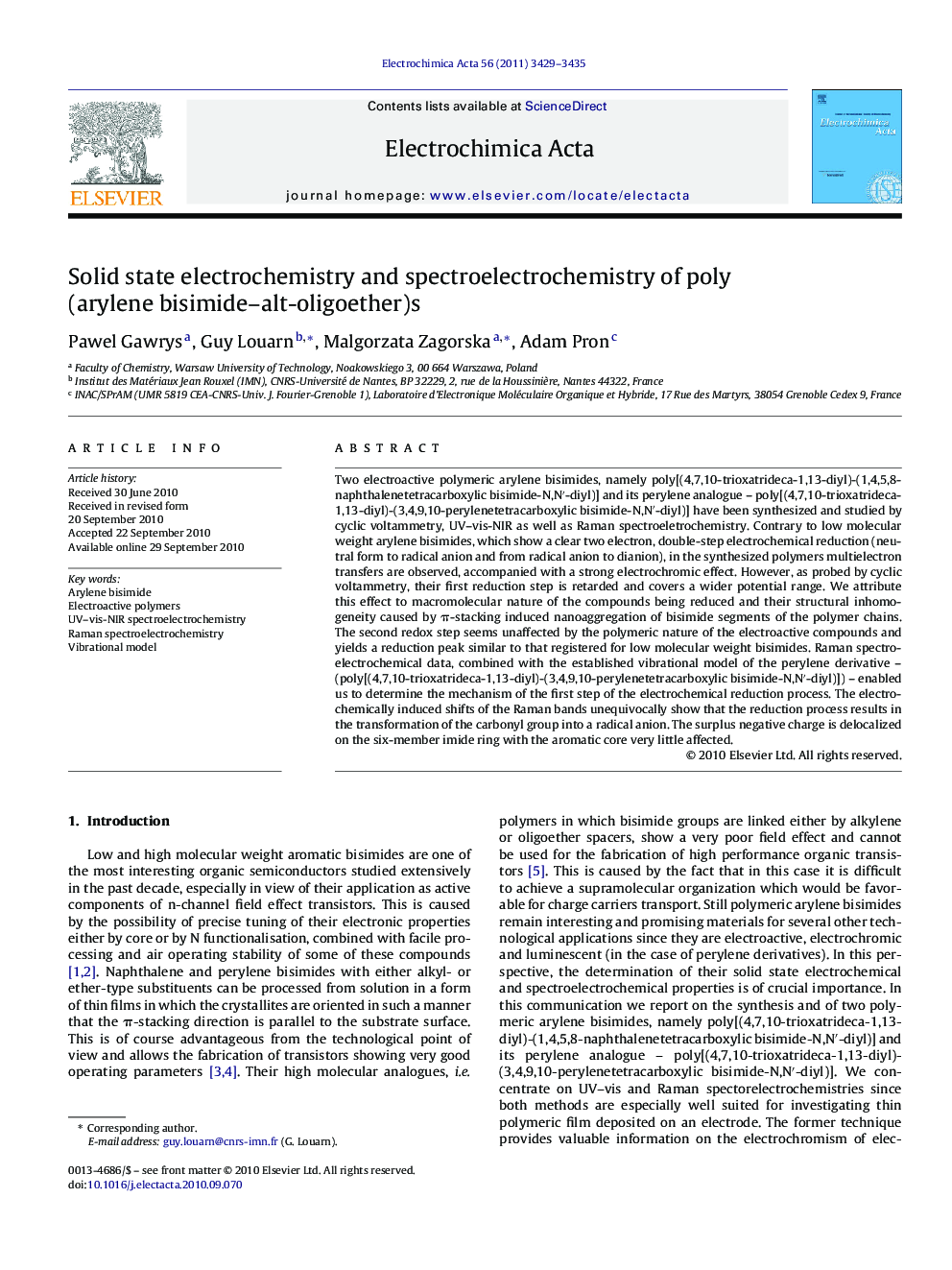| کد مقاله | کد نشریه | سال انتشار | مقاله انگلیسی | نسخه تمام متن |
|---|---|---|---|---|
| 190154 | 459693 | 2011 | 7 صفحه PDF | دانلود رایگان |

Two electroactive polymeric arylene bisimides, namely poly[(4,7,10-trioxatrideca-1,13-diyl)-(1,4,5,8-naphthalenetetracarboxylic bisimide-N,N′-diyl)] and its perylene analogue – poly[(4,7,10-trioxatrideca-1,13-diyl)-(3,4,9,10-perylenetetracarboxylic bisimide-N,N′-diyl)] have been synthesized and studied by cyclic voltammetry, UV–vis-NIR as well as Raman spectroeletrochemistry. Contrary to low molecular weight arylene bisimides, which show a clear two electron, double-step electrochemical reduction (neutral form to radical anion and from radical anion to dianion), in the synthesized polymers multielectron transfers are observed, accompanied with a strong electrochromic effect. However, as probed by cyclic voltammetry, their first reduction step is retarded and covers a wider potential range. We attribute this effect to macromolecular nature of the compounds being reduced and their structural inhomogeneity caused by π-stacking induced nanoaggregation of bisimide segments of the polymer chains. The second redox step seems unaffected by the polymeric nature of the electroactive compounds and yields a reduction peak similar to that registered for low molecular weight bisimides. Raman spectroelectrochemical data, combined with the established vibrational model of the perylene derivative – (poly[(4,7,10-trioxatrideca-1,13-diyl)-(3,4,9,10-perylenetetracarboxylic bisimide-N,N′-diyl)]) – enabled us to determine the mechanism of the first step of the electrochemical reduction process. The electrochemically induced shifts of the Raman bands unequivocally show that the reduction process results in the transformation of the carbonyl group into a radical anion. The surplus negative charge is delocalized on the six-member imide ring with the aromatic core very little affected.
Journal: Electrochimica Acta - Volume 56, Issue 10, 1 April 2011, Pages 3429–3435